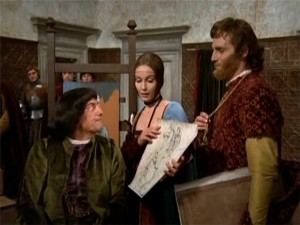Taking the image of Leonardo da Vinci as a paradigm, this issue of Art History Supplement seeks papers that discuss the uses, and abuses, in the representations of the lives of Leonardo. The artist and the canonization, the commodification of the images of the artist and his oeuvre; the popularisation of Leonardo, or just making academic knowledge accessible to a public; as it seems happening in La vita di Leonardo da Vinci; combining fiction and documentary.
This is not a history of art. Paying homage to Kenneth Clark’s “Civilisation,” it adopts the subtitle of that milestone series: “A Personal View.”
With these words John J. O’Connor (1993 – 2009), American journalist and art critic, endorses in the New York Times of January 11, 1981, the American screening of the British documentary series The Shock of the New, written and presented by Robert Hughes, a native of Australia and, among other things, art critic for Time magazine.[1]
John O’Connor himself continued: “Mr. Hughes is nothing if not refreshingly direct: “Unfortunately, epochs of art don’t start or end neatly on cue. Ours is finishing its run now, leaving behind it some of the most challenging, intelligent and beautiful works of art ever made by man, along with a mass of superfluity and rubbish. We’re at the end of the Modern era. Art no longer acts on us in the same way that it did on our grandparents. I want to see why.””[2]
Art documentaries like motion pictures as a term denote the technique in which a series of still images which, when shown on a screen, create the illusion of moving images due to phi phenomenon, in the realms of Gestalt psychology. The nature of the content of their embedded narration may be of a fictional or factual character. By factual, as a board term, I am referring to documentaries, recorded, academic or not, lectures and seminars created for an audience.
An example of such pictures could be the Italian miniseries La vita di Leonardo da Vinci, produced by RAI (1971); with Renato Castellani (director), Philippe Leroy, Giampiero Albertini and Giulio Bosetti, as the narrator. The same series had been on air in Venezuela, France, the USA, and in a shorter version in West Germany. Whereas, the Internet Movie Database (IMDb) features many several appropriations, in the series, films, documentaries and cartoons categories.
In the mini-series, in question, for example, the first two scenes are a flying eagle, a signification of the Leonardo and the eagle incident narrate by Vasari, and a representation of the death of da Vinci in the hands of Francis I of France, as Ingres, at 1818, had visualised the words of Giorgio Vasari.
Taking the image of Leonardo da Vinci as a paradigm, this issue of Art History Supplement seeks papers that discuss the uses, and abuses, in the representations of the lives of Leonardo. The artist and the canonization, the commodification of the images of the artist and his oeuvre; the popularisation of Leonardo, or just making academic knowledge accessible to a public; as it seems happening in La vita di Leonardo da Vinci; combining fiction and documentary.
However, are these motion pictures the narrative of representation of a particular art history? In this occasion, the state of art history in Italy in 70s, as expressed by Renato Castellani; author and director. Which has been the scene of Art History in Italy in 70s? Even though, it could be anachronistic, had Renato Castellani expressed apersonal view (aka a personal history of art) in this series? Or, had he been considering his visual narrative a history of art?
Nevertheless, is there any difference, indeed, between the terms of “history of art” and “personal view [on art]”? As I understand the first term, it notes an academic or a widely accepted (collective?) art history. The mere fact that there is the need to someone to discern her/his position to a “personal view” implies the coexistence of an opposite, story; or another view of the things. Yet, in which context one could find these two, or more, sides of art history? What do we mean by “side of art history”? I understand it as a different methodology, approach and interpretation to or view of the artistic phenomena. Then, again, would the existence of simultaneously active various cultural, for instance, contexts mean also the existence of the same number of art histories and a (n) number of personal views (opposing to the “official” art history)? If this is true, could we speculate that a personal view in one context, in the same time, could be the “dominant” one in another context?
[1] John J. O’Connor (January 11, 1981) “TV View; A PROVOCATIVE NEW SERIES ON MODERN ART,” New York Times, http://www.nytimes.com/1981/01/11/arts/tv-view-a-provocative-new-series-on-modern-art-by-john-o-connor.html (last accessed 06/12/2013).
[2] Ibid.
Submission guidelines
Papers submitted must contain a minimum of 3,000 words. Authors are responsible for securing high-quality digital images and securing rights to reproduce them digitally. Additional author guidelines and editorial procedures can be found here:http://www.arths.org.uk/about/journal/author-s-guidelines
Deadline for submission of manuscripts: April 15, 2014
Scientific Committee
- Annamaria Ducci
- Ioannis Tzortzakakis


Leave a Reply
You must be logged in to post a comment.